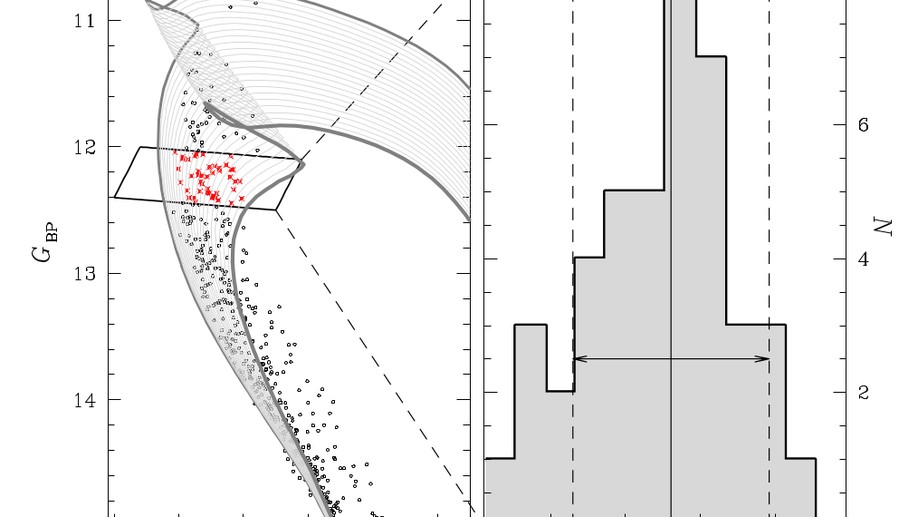Galactic open clusters were widely considered to be the prototypes of single stellar populations. By using photometry in ultraviolet and optical bands and high-resolution Very Large Telescope (VLT) spectroscopy Marino et al. (2018) revealed that the nearby young cluster NGC 6705 (M11) exhibits an extended main-sequence turnoff (eMSTO) and a broadened main sequence (MS). This is the first evidence of multiple stellar populations in a Galactic open cluster. Furthermore, multiple sequences along the CMD correspond to stellar populations with different rotation rates. Specifically, the blue MS (bMS) is formed of slow-rotating stars, while red-MS (rMS) stars are fast rotators. In my Ph.D. I exploited photometry from Gaia data release 2 (DR2) to show that the eMSTO is a common feature among Galactic Open clusters.
High-resolution spectroscopy has revealed that these clusters host stars with a large spread in the observed projected rotations. However, in addition to rotation, internal age variation is indicated as possibly responsible for the eMSTOs, making these systems the possible young
counterparts of globular clusters with multiple populations.
Our analysis suggests that:
(i) 12 open clusters show eMSTOs and/or broadened MSs, which cannot be due to either field contamination or binaries
(ii) split/broadened MSs are observed in clusters younger than ∼700 Myr, while older objects display only an eMSTO, similarly to Magellanic Clouds clusters
(iii) the eMSTO, if interpreted as a pure age spread, increases with age, following the relation observed in Magellanic Clouds clusters and demonstrating that rotation is responsible for this phenomenon.

